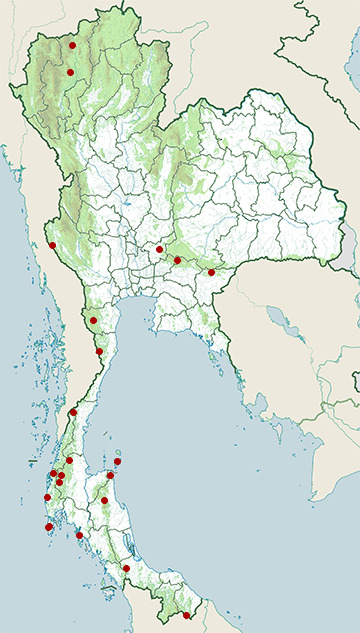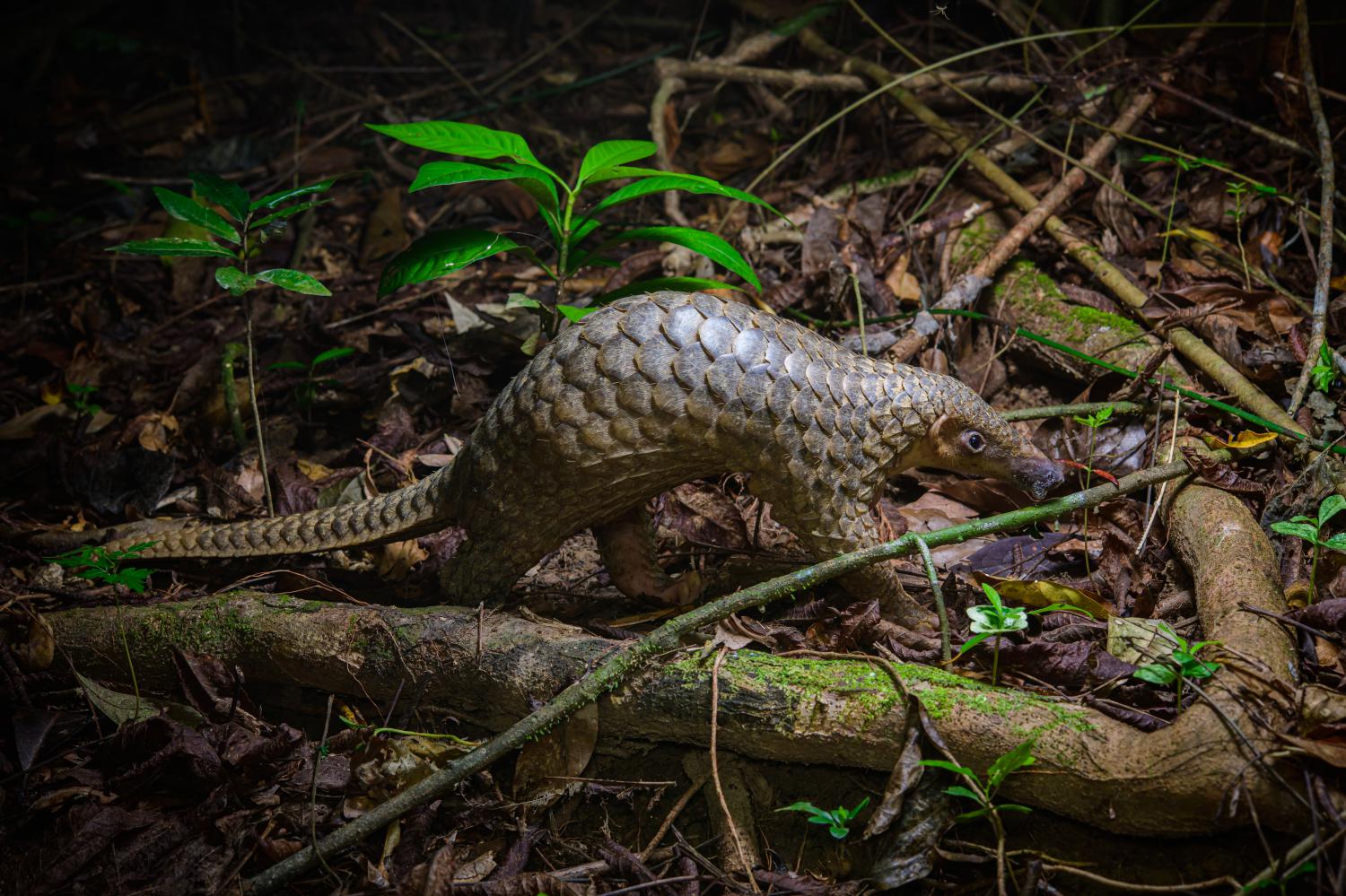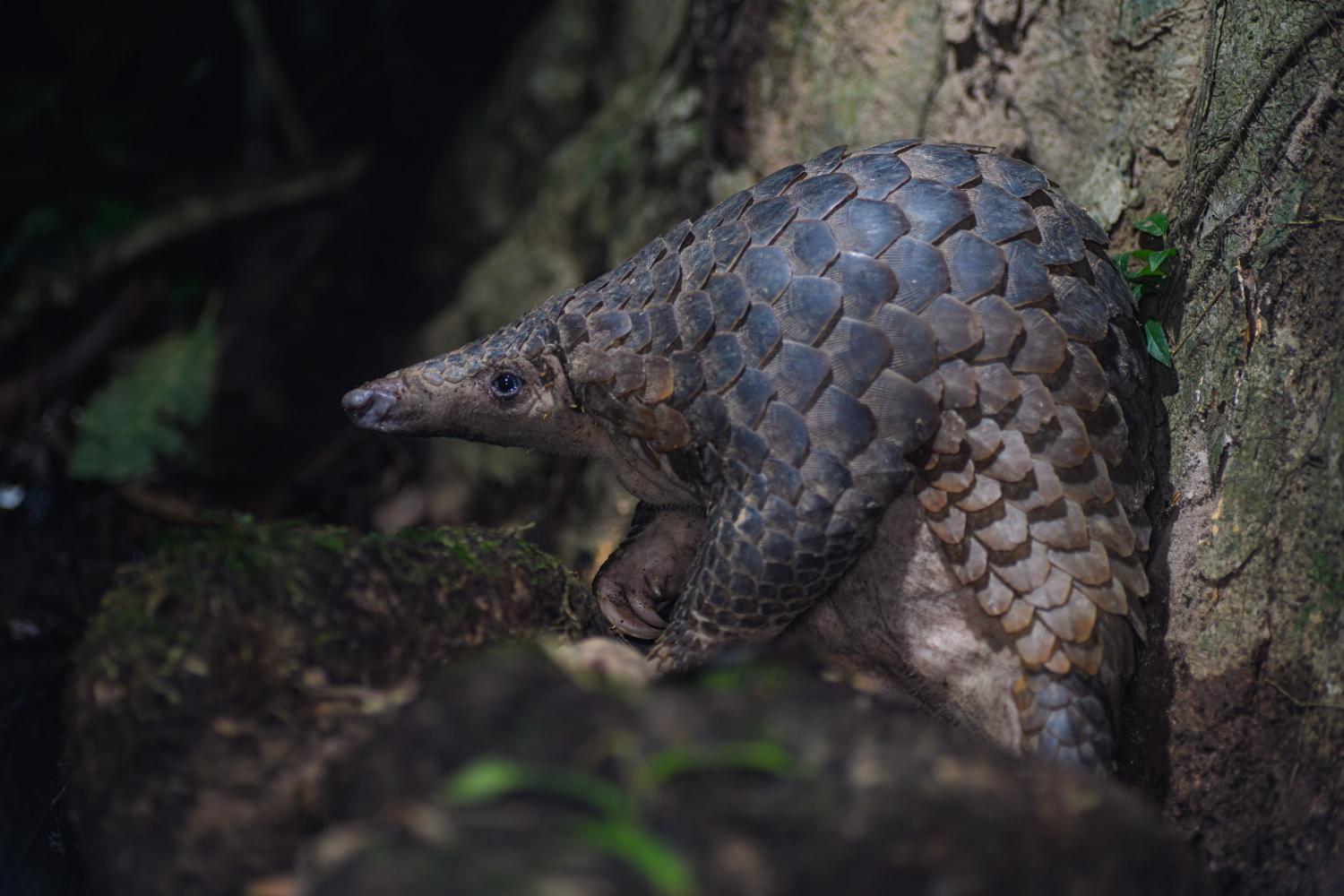Species of Thailand
Sunda pangolin
Manis javanica
Anselme Gaëtan Desmarest, 1822
In Thai: ลิ่น
The Sunda pangolin (Manis javanica), also known as the Malayan or Javan pangolin, is a species of pangolin found in Southeast Asia, including Thailand, Indonesia (Java, Sumatra, Borneo, and the Lesser Sunda Islands), Vietnam, Laos, Cambodia, Malaysia, and Singapore. They prefer forested habitats (primarily, secondary, scrub forest) and plantations (rubber, palm oil). A large part of their life is spent in trees.
Taxonomy
In the past, this species has included the closely related Palawan pangolin (M. culionensis), as both are in the subgenus Paramanis. It is closely related to the Chinese pangolin, although the Malayan species is larger, lighter in colour, and has shorter fore claws.
Description
The skin of the Sunda pangolin's feet is granular, although pads are found on its front feet. It has thick and powerful claws to dig into the soils in search of ant nests or to tear into termite mounds. The sunda pangolin has poor eyesight but a highly developed sense of smell. Lacking teeth, its long, sticky tongue serves to collect ants and termites. Its body is covered by rows of scales and fibrous hair. The head-body length of this pangolin can measure up to 65 cm, tail length is up to 56 cm, and its weight is up to 10 kg. Males are larger than females.
Behaviour and ecology
Pangolins give birth annually to one or two offspring. They breed in the autumn, and females give birth in the winter burrow. Parental care will be given for about three months. Pangolins are sometimes found in pairs, but normally they are solitary, noctural, and behave timidly. They protect their soft underparts by rolling into balls when they feel threatened. They are strong diggers and will make burrows lined with vegetation for insulation near termite mounds and ant nests.
The Sunda pangolin's main predators are tigers and the clouded leopard.
Conservation
Pangolins as a genus are among the most heavily poached and exploited protected animals. Like other pangolin species, the Sunda pangolin is hunted for its skin, scales, and meat, used in clothing manufacture and traditional medicine. Scales are made into rings as charms against rheumatic fever, and meat is eaten by indigenous peoples. Despite enjoying protected status almost everywhere in its range, illegal international trade, largely driven by Chinese buyers, has led to rapidly decreasing population numbers. The Sunda pangolin is currently considered to be critically endangered.
This article uses material from Wikipedia released under the Creative Commons Attribution-Share-Alike Licence 3.0. Eventual photos shown in this page may or may not be from Wikipedia, please see the license details for photos in photo by-lines.
Scientific classification
- Kingdom
- Animalia
- Phylum
- Chordata
- Class
- Mammalia
- Order
- Pholidota
- Family
- Manidae
- Genus
- Manis
- Species
- Manis javanica
Common names
- English:
- Malayan pangolin
- Sunda pangolin
- Spanish: Pangolín Malayo
- French:
- Pangolin Javanais
- Pangolin Malais
- Thai: ลิ่น
Conservation status

Critically Endangered (IUCN3.1)
Photos
Please help us review our species pages if wrong photos are used or any other details in the page is wrong. We can be reached via our contact us page.
Range Map

- Chiang Dao District, Chiang Mai
- Doi Suthep - Pui National Park
- Hala-Bala Wildlife Sanctuary
- Kaeng Khoi District, Saraburi
- Kaeng Krachan National Park
- Kaeng Krung National Park
- Kathu District, Phuket
- Khanom District, Nakhon Si Thammarat
- Khao Lak - Lam Ru National Park
- Khao Luang National Park
- Khao Sok National Park
- Khao Yai National Park
- Khlong Saeng Wildlife Sanctuary
- Khura Buri District, Phang Nga
- Ko Lanta District, Krabi
- Ko Samui District, Surat Thani
- Kui Buri National Park
- Pang Sida National Park
- Phuket Province
- Sadeth Naikrom - Krom Luang Wildlife Sanctuary
- Thong Pha Phum National Park
- Ton Nga-Chang Wildlife Sanctuary


